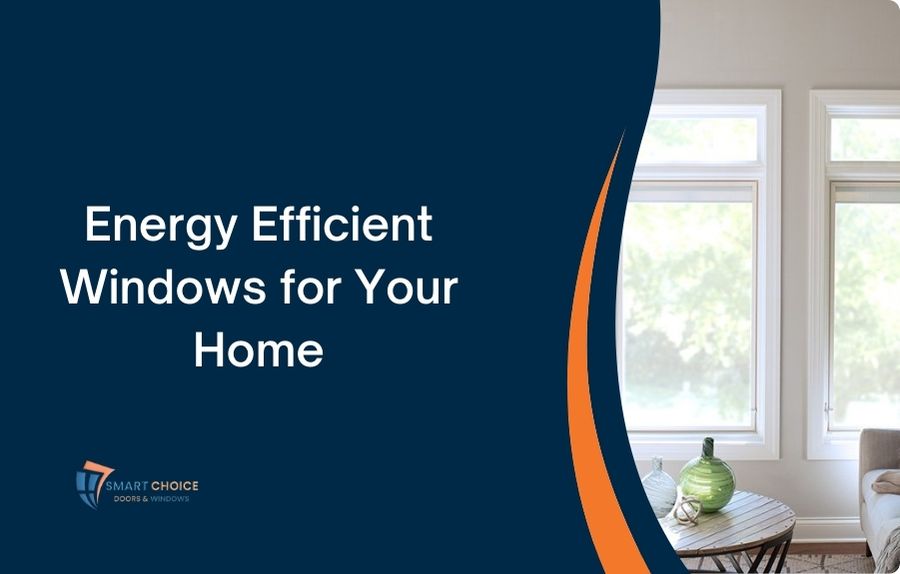Upgrade to Energy-Efficient Windows
What Makes a Window Energy Efficient?
Energy-efficient windows are designed to reduce the amount of heat transfer between the inside and outside of your home. These windows typically feature multiple panes of glass, special coatings, and gas fills to enhance their insulation properties.
- Multiple panes: Double or triple glazing helps reduce heat transfer.
- Low-E coatings: Special coatings reflect infrared light, keeping heat inside in winter and outside in summer.
- Gas fills: Argon or krypton gas between panes improves insulation.
Benefits of Energy Efficient Windows
Energy-efficient windows offer several advantages for homeowners:
- Lower energy bills: Improved insulation reduces heating and cooling costs.
- Enhanced comfort: Stable indoor temperatures throughout the year.
- Environmental impact: Reduced energy consumption lowers your carbon footprint.
- Noise reduction: Multiple panes and gas fills also help minimize outside noise.
Types of Energy Efficient Windows
Double Glazed Windows
Double glazed windows feature two panes of glass separated by a spacer and a sealed air space, which acts as an insulating barrier.
- Cost-effective: Generally more affordable than triple glazed options.
- Improved insulation: Significantly better than single-pane windows.
Triple Glazed Windows
Triple glazed windows have three panes of glass, providing even greater insulation than double glazed windows.
- Superior insulation: Ideal for extreme climates.
- Higher cost: More expensive than double glazed windows but offer better energy efficiency.
Low-E Windows
Low-emissivity (Low-E) windows have a microscopically thin coating that reflects infrared light, keeping heat inside during winter and outside during summer.
- Year-round efficiency: Helps maintain indoor temperatures regardless of season.
- UV protection: Reduces fading of furniture and flooring by blocking ultraviolet rays.
Gas-Filled Windows
Windows filled with inert gases like argon or krypton between the panes enhance their insulation properties.
- Improved performance: Gas fills provide better insulation than air.
- Cost considerations: Argon is more affordable, while krypton offers better insulation but is more expensive.
Frame Materials for Energy Efficient Windows
Vinyl Frames
Vinyl frames are popular for their affordability and good insulating properties.
- Low maintenance: Resistant to moisture and do not require painting.
- Energy efficient: Provide good thermal insulation.
Wood Frames
Wood frames offer excellent insulation and a traditional aesthetic.
- High insulation value: Naturally energy-efficient material.
- Maintenance required: Regular painting or sealing to prevent damage from moisture.
Fiberglass Frames
Fiberglass frames are durable and highly energy-efficient, though they can be more expensive.
- Stability: Minimal expansion and contraction with temperature changes.
- Long-lasting: Resistant to warping and moisture.
Composite Frames
Composite frames combine materials like wood and vinyl or wood and aluminum to offer enhanced insulation and durability.
- Best of both worlds: Combines the strength and insulation properties of different materials.
- Cost: Generally more expensive than single-material frames.
How to Choose the Right Energy Efficient Windows?
Consider Your Climate
The best type of energy-efficient windows for your home depends largely on your local climate.
- Cold climates: Opt for triple glazed windows and gas fills for maximum insulation.
- Warm climates: Low-E windows can help keep your home cool.
Check the Energy Star Rating
Energy Star-rated windows meet strict energy efficiency guidelines set by the U.S. Environmental Protection Agency.
- Performance ratings: Look for windows with high Energy Star ratings for your climate zone.
- Reliable benchmark: Ensures the windows have been tested and certified for energy efficiency.
Evaluate U-Factor and SHGC
The U-factor measures how well a window insulates, while the Solar Heat Gain Coefficient (SHGC) indicates how much heat from the sun is blocked.
- Low U-factor: Indicates better insulation properties.
- Appropriate SHGC: Choose a lower SHGC for hot climates and a higher SHGC for cold climates to optimize solar heat gain.
Installation Tips for Energy Efficient Windows
Professional Installation
Proper installation is crucial to ensure your energy-efficient windows perform as expected.
- Certified installers: Hire professionals with experience in installing energy-efficient windows.
- Proper sealing: Ensure windows are correctly sealed to prevent air leaks.
Regular Maintenance
Maintain your energy-efficient windows to ensure they continue to perform well over time.
- Cleaning and inspection: Regularly clean and check for any damage or wear.
- Sealant checks: Ensure the sealant around the windows is intact to prevent drafts.
Conclusion
Choosing the right type of energy-efficient windows can significantly reduce your energy bills, enhance indoor comfort, and lower your environmental impact. By understanding the different types of energy-efficient windows and their benefits, you can make an informed decision that suits your home and climate. For professional advice and installation of energy-efficient windows, contact Smart Choice Doors & Windows. Our experienced team is ready to help you improve your home’s energy efficiency and comfort. Call us today to schedule a consultation and start saving on your energy bills!
